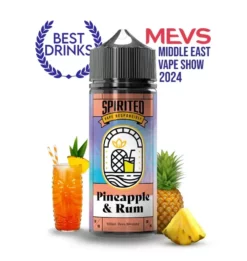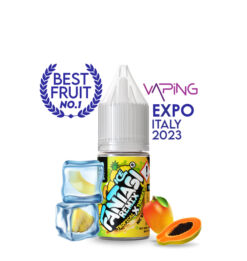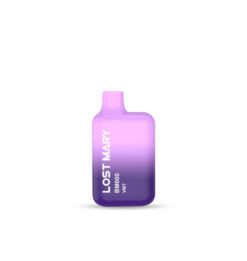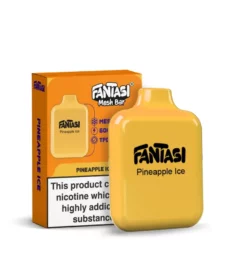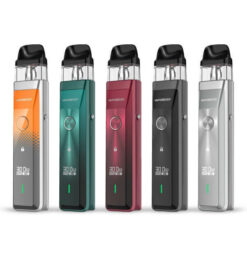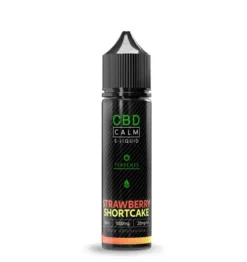What Are The Most Harmful Vape Ingredients Out There?
People have recently questioned if vaping is actually better than smoking. It only takes two minutes to find out on Google that vaping is unquestionably 95% healthier than smoking.
Still, a lot of concerns have been expressed regarding the safety of your e-liquid. And, given that we are inhaling the ingredients in our vape juice, this is a valid question.
So, we’ll break down the banned and harmful vape ingredients so you’re more aware of what to avoid, and learn how all the TPD-compliant e-liquids at Vapoholic surpass all the industry and safety regulations.

What Are The Main Ingredients in a Vape?
In all standard e-liquids, 3-4 core ingredients make up your vape juice.
- Propylene Glycol (PG)
- Vegetable Glycerin (VG)
- Flavourings
- Nicotine (optional)
Propylene glycol (PG), vegetable glycerin (VG), or a combination of the two are the basic constituents of vape liquid, which give it its smooth flavour you all know and love.
These base ingredients are then blended with natural food-grade flavours such as orange, cherry, mint, and many others the specialised mixologists have conjured up. The combination of base and flavouring is what gives vaping its distinctive and gratifying experience.
You can choose to keep these vape juices nicotine-free or opt to choose freebase/standard nicotine or nicotine salts to satisfy your cravings.
But how safe are these main ingredients?
Vegetable Glycerin (VG): SAFE
VG is a non-toxic vegetable-based liquid that is known for its sweetness and thickness. Because of its density, a 100% VG base is extremely thick and difficult to vape successfully. Usually, other competitors use the likes of palm oil or soybean, however, at Vapoholic, we use the more ethical and environmentally friendly rapeseed oil so you can taste a more premium e-liquid.
Propylene Glycol (PG): SAFE
PG is also a non-toxic component that is used to carry the flavour, in e-cig liquid and in food products, it’s also the ingredient that allows you to experience the throat hit when you inhale your vape.
This fluid is also utilised in theatrical smoke machines, shampoos, body lotions, shaving creams, pharmaceutical fluids, and sunscreens.
Propylene Glycol is used in the creation of a variety of consumer items since the ingredient is generally deemed safe.
Nicotine: SAFE
So, we all know the dangers of tobacco in cigarettes, but it’s important to note that these components are different when thinking of smoking vs vaping.
When you spark up a cigarette, the combustion of the tobacco is what causes the harmful ingredients of tar and carbon monoxide to be inhaled.
But with vaping, you’re warming up nicotine liquid to be vapourised along with VG and PG and it has been proven that vapers consume a lot less amount of nicotine compared to smokers.
Nicotine is addictive, so we only advise you to vape if you are an ex-smoker, vaping nicotine when you have never smoked before can do more harm than good for you.
So it is safe to vape, as it is substantially less harmful than smoking.

What Are The Harmful Banned Components in Vape Juice?
So, we’ve determined that the foundation components in your e-liquid are typically safe to inhale and eat. So, what are the dangerous ingredients? The explanation lies in specific components found in vape juice flavours.
Not all flavours contain toxic substances, and there are numerous flavours available that do not contain these compounds, such as every e-liquid you see on Vapoholic. That is why it is critical to understand how to read your vape juice labels and which substances to avoid.
Here’s a quick list of harmful ingredients that are banned from e-liquids:
- Stimulant additives such as caffeine or taurine
- Diacetyl
- Vitamin E acetate
- Pentane 2,3 dione (Diketones)
- Diethylene glycol
- Ethylene glycol
- Metals, including cadmium, chromium, iron, lead, mercury and nickel
- Preservatives liable to release formaldehyde.
Now let’s break down the most dangerous ingredients you will most definitely need to avoid.
Diacetyl: UNSAFE
Out of all the compounds, diacetyl is thought to be the most dangerous – or, to be more accurate, unsettling. Diacetyl was a chemical that gained notoriety in the 1990s when it was found that staff who had worked in popcorn factories had developed bronchiolitis as a result of prolonged exposure to high concentrations of the gas.
Diacetyl is an ingredient that gives our microwave popcorn that delicious buttery flavour. So, while diacetyl levels in food had been examined, it was not realised until this particular instance that inhaling diacetyl may also be dangerous.
As a result of this incidence, Bronchiolitis is now commonly referred to as “popcorn lung“.
This ingredient is now banned in all creations of vape juice, so it’s best to only buy your e-liquid from TPD-compliant vape stores to make sure you’re not putting yourself at risk.
Diketones: UNSAFE
Some food goods and e-liquids utilise diketone as an ingredient to give them that buttery or creamy flavour. The legislation mandates that diketones in food products must be evaluated; inhalation products, like vape juice, are not exempt from this requirement.
You won’t see the word “diketone” on the label of your e-liquid, though, for another reason. The word “diketone” refers to a class of compounds rather than a single component.
Diketones include diacetyl, acetyl propionyl, and acetoin. Each of these compounds is highly different, although acetyl propionyl and acetoin may occasionally contain traces of diacetyl.
But because of this, TPD-compliant companies should not and will not be including these ingredients in your e-liquid.
Vitamin E Acetate: UNSAFE
Vitamin E Acetate is another UK-banned vape ingredient, though it has only ever been found in illicit THC vapes, that have been homemade or created in a unregulated environment. A synthetic version of vitamin E, vitamin C acetate is actually a mixture of α-tocopherol, a kind of vitamin E, and acetic acid.
Particular criticism is now being levelled at vitamin E acetate because of its possible connection to the recent surge in illnesses linked to vaping.
The U.S. Centres for Disease Control and Prevention (CDC) identified this acetate as a likely cause of a large number of vaping-related pulmonary injury (VAP) and sickness cases in the United States in 2019.

TPD-Compliant Vape Juices at Vapoholic
Now, we didn’t want to scare you with a list of dangerous vape ingredients that will be harmful to your health, instead, we wanted to educate you so you make more informed decisions when choosing a e-liquid brand.
The banned ingredients above should not and will not ever be in a vape liquid that you buy from a TPD-compliant company.
And for peace of mind, every e-liquid brand you see at Vapoholic, including Fantasi, Spirited, Ferocious Flavours, Debonair, CBD Calm, and Juicy Blast, are fully TPD-compliant.
We manufacture all of our e-liquids in an ISO7 Cleanroom to the highest of industry standards and try and test all of our flavours ourselves before releasing them to the public.
Using only premium ingredients that make your vaping experience smoother, more enjoyable, and flavoursome.
If you have any questions about how our e-liquids are made, any ingredients you want to double-check, or random queries, our customer service team will always be happy to help.

